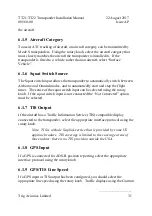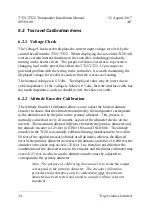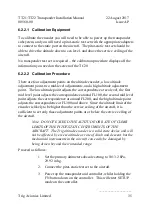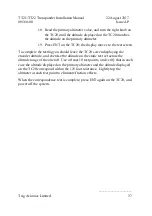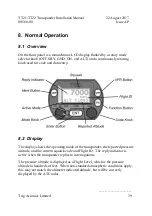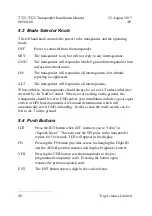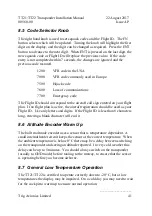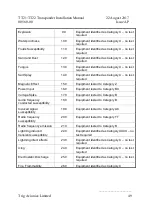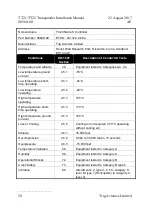
TT21/TT22 Transponder Installation Manual
22 August 2017
00560-00
Issue AP
______________________
Trig Avionics Limited
41
8.5 Code Selector Knob
The right hand knob is used to set squawk codes and the Flight ID. The FN
button selects which will be updated. Turning the knob will highlight the first
digit on the display, and the digit can be changed as required. Press the ENT
button to advance to the next digit. When ENT is pressed on the last digit, the
new squawk code or Flight ID will replace the previous value. If the code
entry is not completed within 7 seconds, the changes are ignored and the
previous code restored.
1200
VFR code in the USA
7000
VFR code commonly used in Europe.
7500
Hijack code
7600
Loss of communications
7700
Emergency code
The Flight ID should correspond to the aircraft call sign entered on your flight
plan. If no flight plan is active, the aircraft registration should be used as your
Flight ID. Use only letters and digits. If the Flight ID is less than 8 characters
long, entering a blank character will end it.
8.6 Altitude Encoder Warm Up
The built in altitude encoder uses a sensor that is temperature dependent. A
small internal heater circuit keeps the sensor at the correct temperature. When
the ambient temperature is below 0°C there may be a delay between switching
on the transponder and seeing an altitude reported. In very cold weather this
delay can be up to 5 minutes. You should always switch on the transponder
(usually to GND mode) before taxiing to the runway, to ensure that the sensor
is operating before you become airborne.
8.7 General Low Temperature Operation
The TT21/TT22 is certified to operate correctly down to -20°C, but at low
temperatures the display may be impaired. On a cold day you may need to wait
for the cockpit to warm up to ensure normal operation.





